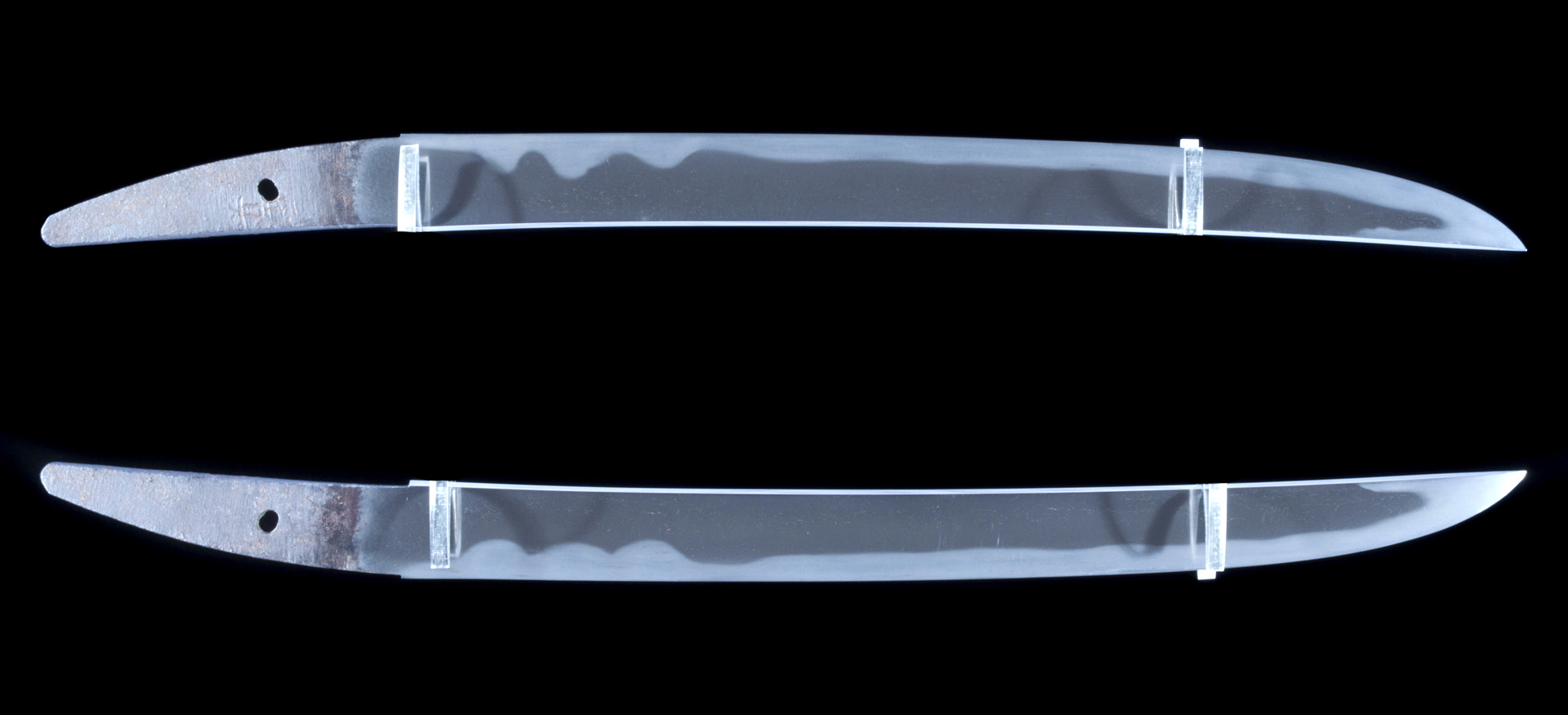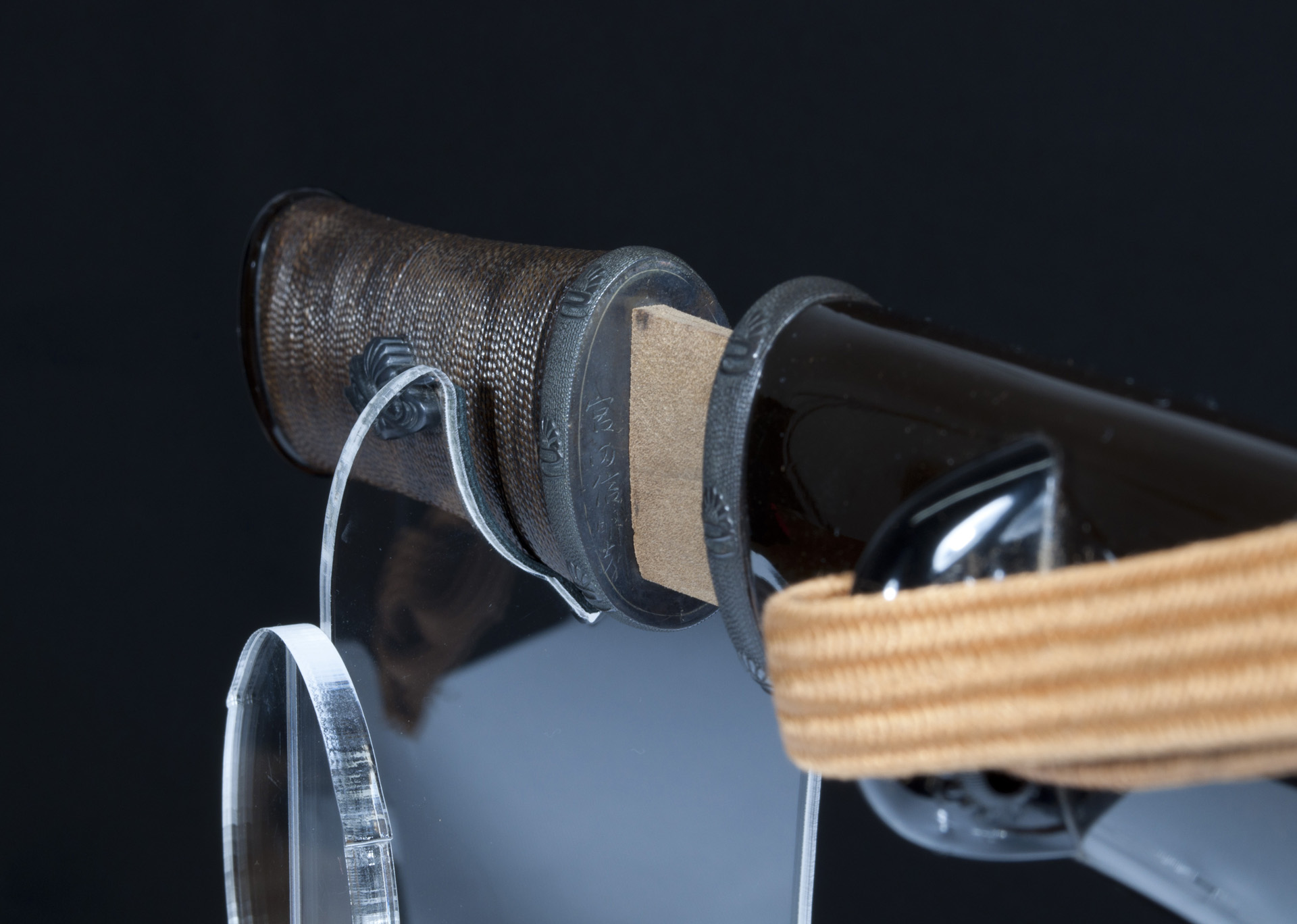Rare sunobi tanto (or wakizashi) signed Masazane – 正真
Muromachi Bunki 1501 – Ise
Sengo school – 千子
This magnificent blade of 32,5 cm nagasa, ubu and signed, is a beautiful and rare example of the work of the prestigious Sengo Masazane.
The kitae is in itame hada, and the hamon in nie-deki is symmetrical, typical of the Sengo school. It starts in gunome-midare in hamachi and then calms down to become a suguha and ends in a jizô style boshi with a long kaeri. You can also admire a profusion of ji-nie and sunagashi.
A superb koshirae is attached to this blade, all further with kamon themed shakudo elements. This one is signed, produced by Nobuaki Miyata, a master of the Meiji era classified Ryoko by the Kinki Meikan. Nobuaki Miyata was also called Kikuo and was a member of the Miyata Kinko family. He lived in Tokyo and was the son of Nobuhisa.
NBTHK Tokubetsu Hozon certificate
Much like Sengo Muramasa, there are several theories that revolve around Masazane’s story.
Most likely, Masazane was initially a late Tegai blacksmith who lived in Yamato. He then went to Kyoto where he became a student of Heianjo Nagayoshi and with whom he traveled a lot. Their first destination was Kuwana in the province of Ise, where they worked together with Muramasa. It is impossible to know who learned from whom, but it is undeniable that there are great similarities between the different works of these three blacksmiths.
Masazane is also the one who forged one of the most famous works in the history of nihonto, the Tonbôgiri. A yari whose shaft was no less than 6 meters long! This was brought into action at the Battle of Hitokotozaka by Honda Tadakatsu in 1572 who pushed his way through the enemy line brandishing it above his head. According to legend, it is also said that the name of this extraordinary weapon (literally « dragonfly cutter) was given to it after a dragonfly was cut in half after trying to land on the blade …
Sold




















